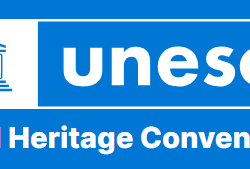Key findings from Uganda’s 2023/24 health survey, including illness trends, health-seeking behavior, and the rising cost of care. Health Status and Health Care Access in Uganda explained.
Uganda’s 2023/24 health data paints a telling picture of a population navigating both increased illness rates and stark disparities in access to medical care. With one in every five Ugandans reporting illness in the month prior to the survey, the numbers reflect a worrying trend: illness rates have jumped from 19% in 2019/20 to 21% in 2023/24. But even more revealing are the choices people make when seeking care—and what prevents them from doing so.
This article unpacks the latest survey findings, exploring everything from health-seeking behavior and access to facilities, to reasons for skipping care and the financial burdens households bear. These insights are critical for policymakers, NGOs, and everyday citizens concerned with improving health outcomes in Uganda.
Rising Illness Rates: A National Concern
The increase from 19% to 21% in reported illness over just four years may appear modest, but it signals a significant public health shift. This trend suggests growing exposure to diseases, gaps in preventive care, or deteriorating health infrastructure. These findings underscore the urgency of improving public health education, early disease detection, and accessibility to medical services.
Health-Seeking Behavior: Encouraging Yet Uneven
A promising 82% of those who experienced illness or injury sought medical attention, a testament to health awareness and increasing health literacy. This majority shows that most Ugandans do value medical care and are willing to seek it when needed.
However, the data also reveals inequality in where that care is sought.
Private Clinics Dominate Health Services
Out of those who sought treatment:
- 54% visited private hospitals or clinics
- 27% visited government health facilities
This leaning toward private health services could reflect several factors:
- Perceived better quality or faster service
- Availability of medications and equipment
- Shorter waiting times
However, this preference places a financial strain on households, especially those with low income, since private care typically comes at a higher cost.
Government Health Facilities: Underutilized or Underperforming?
That only 27% turned to public health institutions raises questions about the public health system’s capacity, trustworthiness, and service quality. The low uptake may also point to:
- Drug stock-outs
- Long wait times
- Inadequate staffing
- Negative patient experiences
Why Some Don’t Seek Care: Mild Illness Perception Leads
Among the 18% who did not seek care, the top reason was that the illness was considered mild (47%). While it’s common for individuals to dismiss symptoms as minor, this trend may delay diagnosis of more serious conditions.
Other possible reasons—though not detailed in the data—often include:
- High treatment costs
- Long distances to health facilities
- Cultural or traditional beliefs
- Previous negative experiences
Access to Health Facilities: A Mixed Bag
Encouragingly, 78% of those who sought care were able to do so within 3 kilometers of their residence. This indicates relatively good geographic access for a majority of the population.
The 3KM Radius: Close, But Not Always Convenient
While distance is a significant factor in accessing health services, it doesn’t always tell the whole story. Other potential access barriers include:
- Poor road networks
- Limited transportation options
- Security concerns
- Health facility opening hours
So, while many may live “close” to a health center, actual access could be limited in practice.
Rising Out-of-Pocket Health Costs
Ugandan households spent a median monthly amount of UGX 32,000 on health care. This figure, while seemingly moderate, can represent a large chunk of income for low-earning households, especially in rural areas.
Let’s break it down:
| Health Expense | Estimated Monthly Cost (UGX) |
|---|---|
| Consultation Fees (Private) | 10,000 – 15,000 |
| Medication (Basic) | 5,000 – 10,000 |
| Transport to Facility | 2,000 – 5,000 |
| Miscellaneous Expenses | 5,000+ |
Such costs may push vulnerable families into debt or lead them to skip care altogether.
Frequently Asked Questions (FAQs)
1. What percentage of Ugandans reported illness in 2023/24?
Approximately 21% of the population reported being ill in the month prior to the survey.
2. How many people sought health care after falling ill or getting injured?
About 82% of those who fell ill or were injured sought some form of medical treatment.
3. Where do most Ugandans go for treatment?
The majority—54%—sought care at private hospitals or clinics, while 27% visited government facilities.
4. Why didn’t some people seek treatment?
The most common reason cited was that the illness was mild (47%).
5. How far are health facilities from most households?
78% of individuals accessed care within a 3km radius of their home.
6. How much do Ugandan households spend on health?
The median monthly health expenditure per household is about UGX 32,000.

Bridging the Health Access Gap in Uganda
The 2023/24 data gives us both hope and warning. While health-seeking behavior is high and many households live within reachable distance to a facility, challenges remain. Heavy reliance on private care, unaffordable costs, and underuse of public facilities show that Uganda’s health system needs urgent policy attention.
Strengthening government services, reducing out-of-pocket costs, and improving awareness around early care-seeking could dramatically transform health outcomes.
Challenges in public health system effectiveness, accessibility beyond physical distance, and the significant financial burden of healthcare in Uganda
- Illness Prevalence:
- 21% of people reported an illness/injury in the month before the 2023/24 survey.
- This represents a 2-percentage point increase from the 19% reported in 2019/20.
- Healthcare Seeking Behavior:
- 82% of those who were ill/injured sought healthcare.
- Primary Providers:
- Private hospitals/clinics: 54%
- Government health facilities: 27%
- (Implies ~19% used other sources like pharmacies, traditional healers, or NGOs)
- Top Reason for NOT Seeking Care (18%):
- Illness perceived as mild: 47%
- Accessibility:
- 78% of those seeking care made their first consultation within 3 kilometers of their location.
- Financial Burden:
- The median monthly household out-of-pocket expenditure on health was approximately UGX 32,000.
Key Implications:
- Slight Increase in Morbidity: More people reported recent illnesses in 2023/24 compared to 2019/20.
- Strong Preference for Private Sector: People seek care primarily from private providers, suggesting potential gaps in public service perception (accessibility, quality, availability).
- Accessibility vs. Utilization: While most live close to a facility (within 3km), the low utilization of government facilities (27%) despite this proximity highlights significant barriers beyond distance (cost, perceived quality, wait times, drug availability).
- Financial Pressure: The substantial median out-of-pocket cost (UGX 32,000/month) underscores the financial burden of healthcare on households, even with many not seeking care for perceived mild illnesses.
- “Mild Illness” Barrier: Nearly half of those not seeking care did so because they felt the illness was mild. This could indicate under-treatment, potential for conditions worsening, or good self-care awareness. Further investigation into the types of illnesses classified as “mild” would be useful.
External Resource: Uganda Ministry of Health Reports









